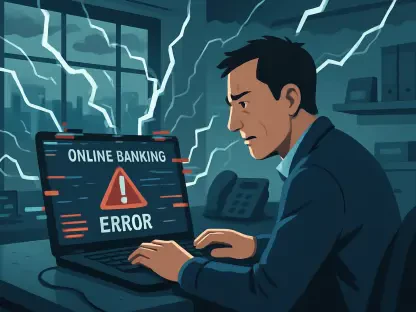The Spanish real estate market is facing an unsettling rise in default risk, as highlighted by the latest reports from the Bank of Spain. The semiannual documentation from the bank paints a concerning picture for non-financial corporations, especially within construction, real estate, and services sectors. This assessment arrives against a backdrop of increased market volatility and enhanced borrowing difficulties following a significant rise in default probabilities. According to the report, the figures have shifted unfavorably since the third quarter of 2024, with a noted 39-basis-point increment from 2.14% to 2.5%. Although these rates still sit 25 basis points below the 2022 averages, the looming trend demands attention due to its potential repercussions.
Escalating Risk in Construction and Real Estate
Surge in Default Probability
The risk landscape reveals a stark escalation in default probabilities for large corporations operating within Spain. Specifically, these corporations now experience a 51-basis-point increase in their potential for defaults, reaching a rate of 2.03%. This statistic remains about 50 basis points below the broader average for non-financial firms, yet the surge is undeniably pronounced. The primary driver behind this spike is an observed flaring of risks within construction and real estate. In the past few quarters, these sectors have exhibited a 44 and 96 basis point hike in average default risks, respectively. Such developments suggest underlying vulnerabilities that could destabilize the broader economic fabric if left unchecked.
Impact on Credit Quality
A concerning decline in credit quality has been observed across various sectors in Spain, largely tied to corporate defaults. As the Bank of Spain delineates, 54% of enterprises have encountered payment defaults over the past year. Furthermore, a troubling 20% of small and medium enterprises have resorted to bankruptcy filings due to their inability to collect outstanding debts. Such financial distress poses a significant threat to operational continuity, with 8% of businesses reporting that defaults threaten their very viability. The overall collection climate is challenging, with the average period standing at 83 days, exceeding the legally prescribed 60-day limit. Payment delays beyond this timeframe amount to 5.7% of total transactions, demonstrating only marginal improvement yet far from optimal resilience.
Broader Sectoral Influences
Additional Industries Affected
While construction and real estate bask in the spotlight, other sectors have not been entirely exempt from the increasing credit risks. The retail, hospitality, and energy sectors have witnessed modest yet notable upticks in their respective credit liabilities. From the third quarter of 2024 to the first quarter of 2025, these industries recorded rises of nine to twelve basis points. Although these fluctuations do not indicate a dramatic increase in what’s termed as ‘tail risk,’ they do hint at shifts that ought to be vigilantly monitored. The sheer proximity of these credit levels to their 2022 equivalents signifies a persistent undercurrent that could affect broader economic dynamics.
Potential Consequences and Recommendations
The Bank of Spain’s findings underscore a pressing need for financial prudence and stringent monitoring of risk levels. In response, the bank urges institutions to adopt meticulous risk analysis frameworks and enhance their provisions where necessary. Companies, meanwhile, should critically evaluate their debt structures and implement strategies to anticipate adverse financial scenarios. The current climate, marked by elevated financing costs, demands careful navigation to avoid unwarranted borrowing. By encouraging a balanced and cautious approach, both financial entities and individual companies can better withstand the unpredictable shifts in real estate market trends.
Navigating Uncertain Terrain
The recent reports from the Bank of Spain reveal a troubling trend in the Spanish real estate market, highlighting an alarming rise in default risk. This uptick is particularly visible within non-financial corporations in the construction, real estate, and services sectors. The report provides a snapshot of the situation amid heightened market volatility and the increasing difficulty of securing loans. A significant rise in default probabilities has been noted, showing an unfavorable shift since the third quarter of 2024. Specifically, there has been a 39-basis-point increase, moving from 2.14% to 2.5%. Although these rates remain 25 basis points below the averages seen in 2022, the current upward trend calls for close monitoring due to its potential negative impacts. As financial conditions continue to tighten, stakeholders within these sectors must remain vigilant, as the current trajectory could lead to broader economic implications if left unchecked.









